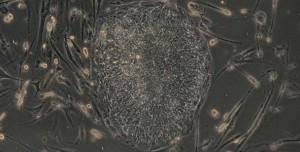IPS Cells show “a consistent pattern of reprogramming errors”
As I have said in previous blog posts on IPS cells, this is a great concept, but a dangerous until proven otherwise idea. IPS means induced pluripotent stem cells-basically when scientists take a regular old cell and reprogram it to become an embryonic like stem cell. The need for these cells is dubious, as adult stem cells taken from the patient are more than capable of repairing tissue. However, the real need for IPS cells is business related and not medical-an example of the tail wagging the dog. The story line goes like this: 1. adult stem cells are body parts, hence hard to patent 2. IPS cells are created in a lab dish and by definition are patentable, since they don’t exist in nature 3. obtaining a patent on a cell allows a pharma barrier to entry for competitors 4. the cost of selling and distributing cells in interstate commerce through an FDA BLA is so high, that pharma needs this barrier to entry to pay back that investment 5. this whole issue of barrier to entry has no societal benefit and only serves business interests, in that it prevents more solutions from being available. A new study out this week continues the other morality tale-allowing the business tail to wag the medical dog is almost always a bad idea. Case in point-based on this new study and others, these IPS cells never really loose the reality that they’re not supposed to be stem cells. This means that rather than the reprogramming process turning them into true stem cells capable of becoming any cell in the body, they have genetic errors (i.e. if they started out as a skin cell, genetically they still think they’re a skin cell). This has very scary implications for IPS research in humans. As another example, the researchers in this study found that the transformation from adult to stem cell was invariably incomplete or inadequate, leaving telltale “hotspots” in the DNA code. While we don’t know all the implications of these new findings, IMHO the findings raise serious long-term safety concerns that “half baked” cells lingering in the body for years may have all sorts of unintended consequences.

If you have questions or comments about this blog post, please email us at [email protected]
NOTE: This blog post provides general information to help the reader better understand regenerative medicine, musculoskeletal health, and related subjects. All content provided in this blog, website, or any linked materials, including text, graphics, images, patient profiles, outcomes, and information, are not intended and should not be considered or used as a substitute for medical advice, diagnosis, or treatment. Please always consult with a professional and certified healthcare provider to discuss if a treatment is right for you.
